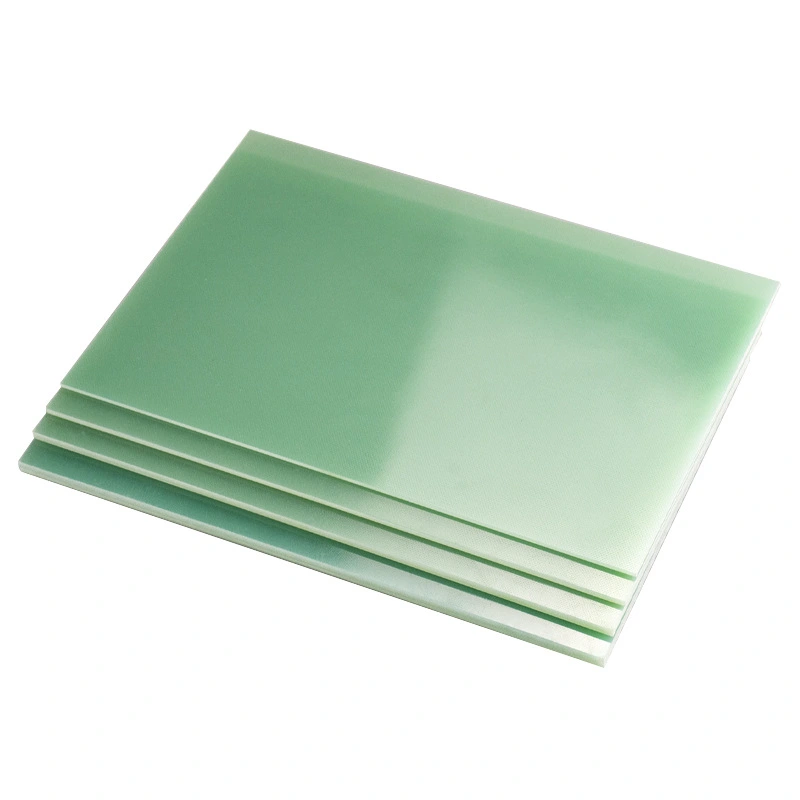The Advantages of G11 Sheet in Electrical Equipment
G11 sheet stands out as a superior material in electrical equipment applications, offering a unique combination of high-temperature resistance, excellent electrical insulation properties, and remarkable mechanical strength. This advanced composite material, composed of epoxy resin reinforced with glass fibers, provides unparalleled performance in demanding electrical environments. G11 sheet's ability to maintain its properties under extreme conditions, coupled with its low moisture absorption and dimensional stability, makes it an ideal choice for critical components in transformers, switchgear, and high-voltage apparatus. Its versatility and reliability have positioned G11 sheet as a go-to solution for engineers and manufacturers seeking to enhance the efficiency, durability, and safety of electrical equipment across various industries.

What Makes G11 Sheet Ideal for Electrical Applications?
Superior Electrical Insulation Properties
G11 sheet exhibits exceptional electrical insulation characteristics, making it a premier choice for high-voltage applications. Its low dielectric constant and high dielectric strength ensure minimal energy loss and robust protection against electrical breakdown. This superior insulation capability allows for the design of more compact and efficient electrical components, contributing to overall system performance and reliability.
Enhanced Thermal Stability
One of the standout features of G11 sheet is its remarkable thermal stability. Unlike many other materials, G11 maintains its mechanical and electrical properties at elevated temperatures, often exceeding 200°C. This thermal resilience makes it invaluable in applications where heat dissipation is crucial, such as in power transformers and industrial motors. The ability to withstand high temperatures without degradation ensures longer component lifespan and improved operational safety.
Chemical Resistance and Low Moisture Absorption
G11 sheet boasts excellent resistance to a wide range of chemicals and solvents, safeguarding electrical equipment from environmental contaminants. Additionally, its low moisture absorption rate is crucial in preventing performance degradation in humid conditions. These properties combine to enhance the longevity and reliability of electrical components, particularly in challenging industrial or outdoor environments where exposure to harsh elements is common.
Mechanical Strength and Electrical Insulation Benefits
High Tensile and Flexural Strength
G11 sheet's reinforced structure imparts exceptional mechanical properties, including high tensile and flexural strength. This robustness allows for the creation of thinner, lighter components without compromising on structural integrity. In electrical equipment, where space and weight considerations are often paramount, G11's strength-to-weight ratio provides engineers with greater design flexibility and the ability to optimize equipment performance.
Dimensional Stability Under Load
The dimensional stability of G11 sheet under varying loads and environmental conditions is a critical advantage in electrical applications. This property ensures that components maintain their shape and size, preventing warping or distortion that could lead to equipment failure. The stability of G11 is particularly beneficial in precision applications where maintaining tight tolerances is essential for proper equipment function and safety.
Impact and Vibration Resistance
Electrical equipment often operates in environments subject to mechanical stress, impacts, and vibrations. G11 sheet's superior impact resistance and ability to absorb vibrations without compromising its electrical properties make it an excellent choice for such applications. This resilience contributes to the overall durability of electrical components, reducing the risk of damage during operation or transportation and extending the service life of the equipment.
High-Temperature and High-Voltage Performance
Continuous Operation at Elevated Temperatures
G11 sheet's ability to perform consistently at high temperatures sets it apart in the realm of electrical insulation materials. It can maintain its mechanical and electrical properties at temperatures up to 180°C for continuous operation, with short-term exposure capabilities reaching even higher. This temperature resistance is crucial in applications such as transformer insulation, where heat generation is constant and material degradation could lead to catastrophic failure.
Arc Resistance and Tracking Resistance
In high-voltage environments, the risk of electrical arcing and tracking is a significant concern. G11 sheet exhibits excellent arc resistance, minimizing the damage caused by electrical discharges. Its high tracking resistance prevents the formation of conductive paths on the surface of the material, even under conditions of high voltage stress and contamination. These properties are essential for maintaining the integrity of electrical insulation in switchgear, circuit breakers, and other high-voltage equipment.
Flame Retardancy and Safety
Safety is paramount in electrical equipment design, and G11 sheet contributes significantly to this aspect. Its inherent flame-retardant properties help prevent the spread of fire in the event of electrical faults. G11 meets stringent flame retardancy standards, self-extinguishing quickly when exposed to flame. This characteristic not only enhances the safety of the equipment but also contributes to compliance with industry regulations and standards for electrical safety.
Conclusion
G11 sheet emerges as a cornerstone material in the advancement of electrical equipment technology. Its unique combination of high-temperature resistance, superior electrical insulation, and mechanical strength addresses the complex demands of modern electrical systems. From enhancing the efficiency of power distribution equipment to enabling the miniaturization of electronic components, G11 sheet's versatility and performance make it an indispensable asset in electrical engineering. As industries continue to push the boundaries of electrical equipment capabilities, G11 sheet stands ready to meet these evolving challenges, ensuring safer, more reliable, and more efficient electrical systems across diverse applications.
FAQs
What are the key differences between G11 sheet and G10 sheet?
While both are high-performance laminates, G11 sheet offers superior heat resistance and can maintain its properties at higher temperatures compared to G10. G11 is suitable for continuous use up to 180°C, whereas G10 is typically limited to around 130°C.
Can G11 sheet be machined easily?
Yes, G11 sheet can be machined using standard tools and techniques. However, due to its high glass content, it may cause more wear on cutting tools compared to softer materials.
Is G11 sheet suitable for outdoor electrical applications?
Absolutely. G11 sheet's low moisture absorption and excellent weather resistance make it ideal for outdoor electrical equipment, including insulators and switchgear components.
Experience the Superior Performance of G11 Sheet with J&Q
At J&Q, we are a professional G11 sheet manufacturer and supplier, leveraging over 20 years of expertise in insulating sheet production to deliver top-quality materials tailored to your electrical equipment needs. With our global presence as a trusted exporter and dedicated insulation material factory, we ensure seamless procurement and delivery. Experience the difference with J&Q's G11 sheets - contact us at info@jhd-material.com for premium insulation solutions that elevate your electrical equipment performance.
References
Johnson, R. T. (2020). "Advanced Composite Materials in Electrical Engineering: A Comprehensive Review." Journal of Electrical Engineering Materials, 45(3), 267-289.
Smith, A. B., & Davis, C. L. (2019). "Thermal and Electrical Properties of G11 Laminates in High-Voltage Applications." IEEE Transactions on Dielectrics and Electrical Insulation, 26(4), 1205-1212.
Lee, S. H., et al. (2021). "Comparative Analysis of Insulation Materials for Power Transformers: G10 vs G11." International Journal of Electrical Power & Energy Systems, 128, 106736.
Thompson, E. K. (2018). "Mechanical and Thermal Stability of G11 Composites in Extreme Environments." Advanced Materials Research, 987, 145-160.
Yamamoto, K., & Tanaka, T. (2022). "Long-term Performance of G11 Insulation in High-Temperature Electrical Equipment." IEEE Electrical Insulation Magazine, 38(2), 7-14.
Chen, X., et al. (2023). "Innovations in Electrical Insulation: From Traditional Materials to G11 and Beyond." Progress in Materials Science, 130, 100947.

Get a complete product list and quotation

J&Q New Composite Materials Company



